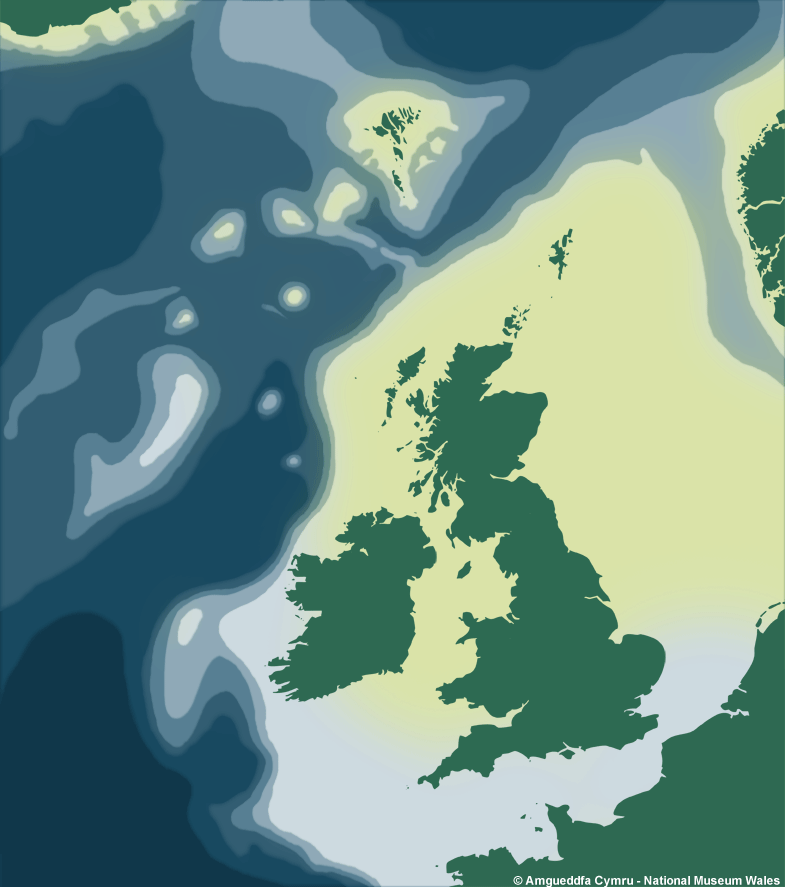Astarte elliptica (Brown, 1827)
Crassatelloidea : Astartidae |
| Tebble name: | Astarte elliptica (Brown) |
| Smith & Heppell name: | Tridonta elliptica (Brown, 1827) |
To size: To 35mm. Shell Structure: Relatively solid. Equivalve: Equivalve. Equilateral: Relatively inequilateral, the beaks lie approximately 35% of dorsal margin length from anterior. Tumidity: Slightly compressed. Outline: Broadly rounded oval, height of shell approximately 70% of the length. Posterior dorsal margin long, gently sloping, very slightly convex to almost straight; anterior dorsal margin more steeply sloping and strongly concave; anterior and posterior ends bluntly rounded; ventral margin gently rounded; lunule very distinct, sunken, elongate heart-shaped with well defined, raised edges; escutcheon distinct, lanceolate, with very well defined raised edges. Beaks prosogyrous.
Sculpture: Prominent raised concentric ridges (up to 30 in adults) with blunt crests and numerous irregular concentric lines which are also present on the raised ridges. The ridges become less prominent towards the shell margins. Margin: Smooth. Ligament: Broad, distinct but not prominently raised, runs for approximately one third the length of the escutcheon. Hinge: Heterodont: Robust hinge plate; right valve with 2 solid, blunt cardinal teeth, the posterior tooth is thin and inconspicuous and the anterior tooth is broad; left valve with 3 blunt cardinal teeth, the 2 anterior teeth are relatively broad and solid whereas the posterior cardinal is very thin and inconspicuous. Pallial Musculature: Entire. Periostracum: Ranges from yellowy brown to dark brown, almost black. Dull surface texture with a mesh of microscopic, elliptical-oval pits. Colour: White.
Distribution & Ecology
Lives in a range of clean, silty and muddy sands and gravels from the near sub-littoral towards the mid-shelf, depth range c.5m - >150m, but most frequently in depths <50m.
Depth Range
Continental Shelf (to 200m)

Additional Information & Related Species
Key Features & Similar Species
Related Species
Crassatelloidea : Astartidae
References
Listed are literature citing Astarte elliptica (Brown, 1827). Reference containing the species Type Description is highlighted.
|
Brown T 1827. Illustrations of the recent conchology of Great Britain and Ireland WH & D Lizars, Edinburgh. 125pp, 52pls. |
Resources
- Conchological Society
of Great Britain & Ireland
Provides resources for understanding, identifying, recording, and conserving molluscs - CLEMAM
Check List of European Marine Mollusca - MarLIN
The Marine Life Information Network for Britain and Ireland (MarLIN) provides information for marine environmental management, protection and education. It is a centre of excellence in spatially based and time-series marine biological information and supports good stewardship in the marine environment. - NBN Gateway
National Biodiversity Network's Gateway. Use it to explore UK biodiversity data, as contributed by participating data providers. - BivAToL
- MarBEF
- Malacological Society
- Unitas Malacologica
- Census of Marine Life
- MarBEF
MarBEF, a network of excellence funded by the European Union and consisting of 94 European marine institutes, is a platform to integrate and disseminate knowledge and expertise on marine biodiversity, with links to researchers, industry, stakeholders and the general public.












